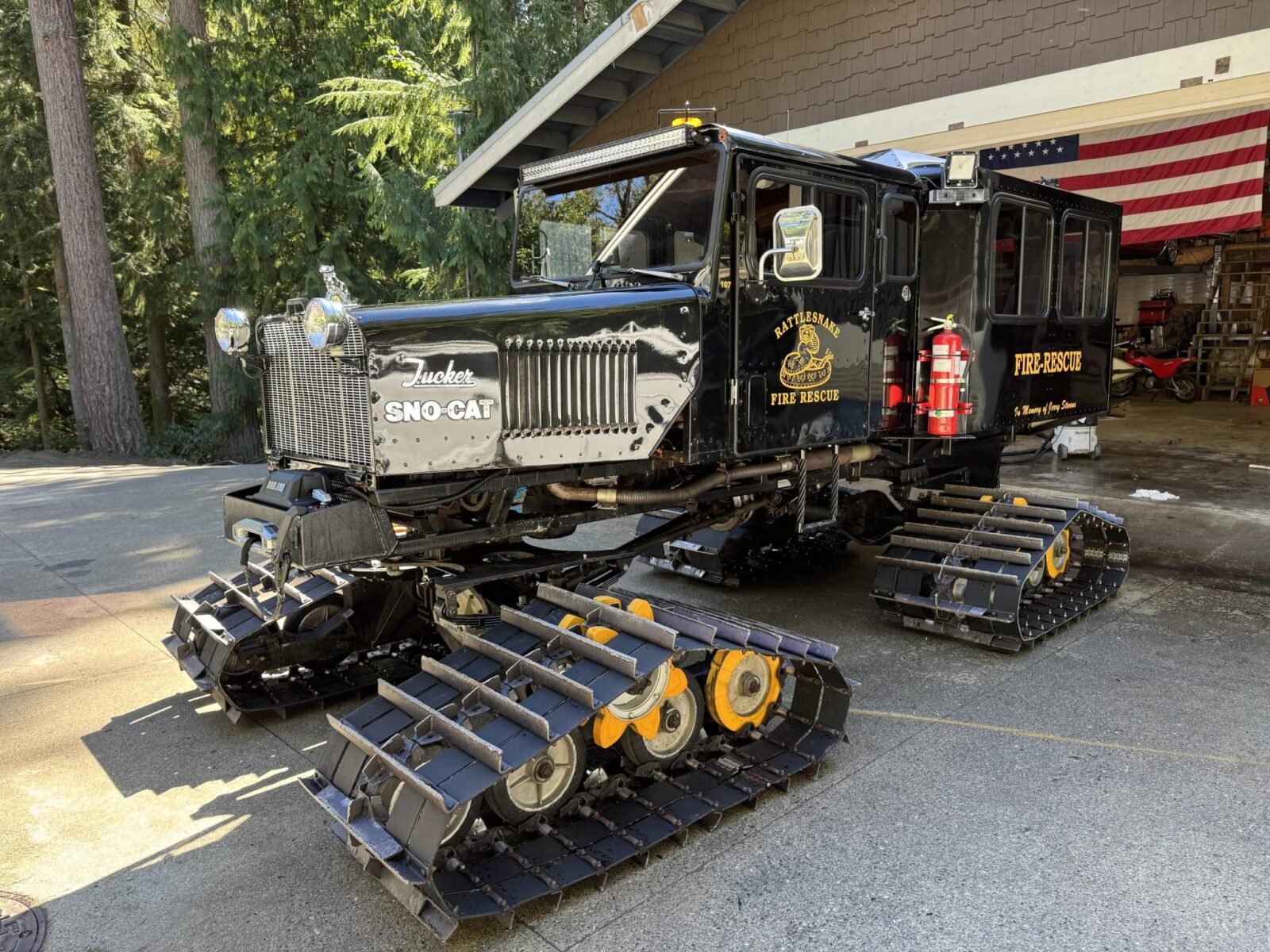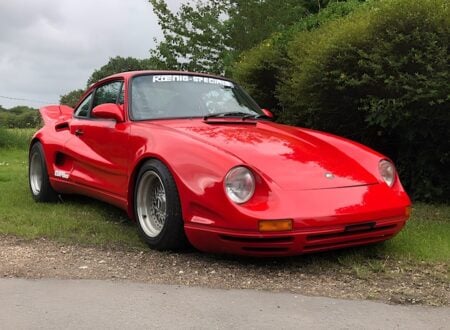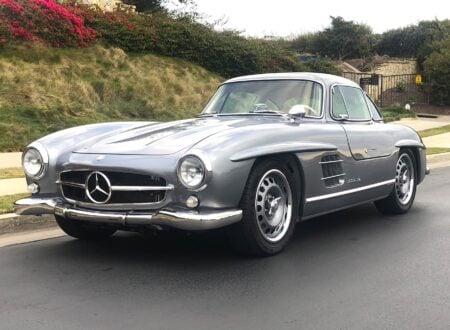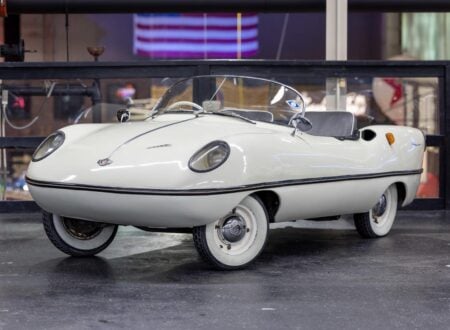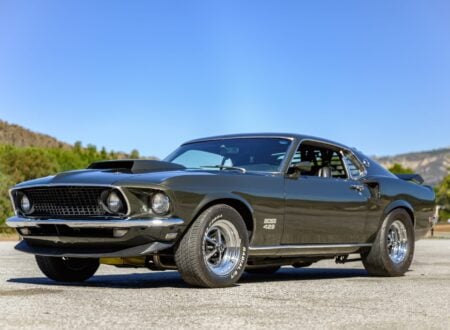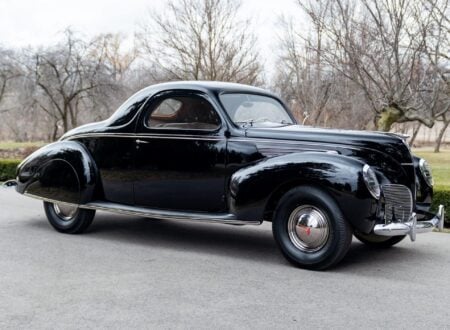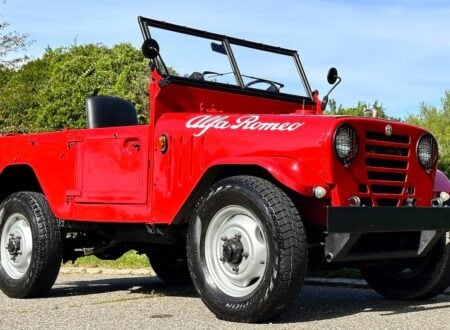This is a 1985 Tucker Sno-Cat that now benefits from a series of updates and recent mechanical work, and it now has a rear passenger cab able to accommodate five people.
Sno-Cats are one of relatively few heavy vehicles that can reliably operate in deep snow – in fact a fleet of them completed the first motorized crossing of Antarctica as part of the Commonwealth Trans-Antarctic Expedition led by none other than Sir Edmund Hillary and Sir Vivian Fuchs.
Fast Facts: The Tucker Sno-Cat
- This is a 1985 Tucker Sno-Cat with significant updates, it now has a custom rear passenger cab that seats five and it’s powered by a Chrysler 318 V8 with a 4-speed manual and transfer case. It has four chain-driven track assemblies with metal grousers and rubber belts that provide flotation and traction on snow, and hydraulic swingarm steering and a single transfer-case disc brake.
- Tucker Sno-Cat history began in 1942 in Medford, Oregon. E. M. Tucker Sr developed dependable snow traveling machines using flexible, pontoon-mounted tracks. By the late 1940s the company standardized an independent four-track layout. Steering pivots the front and rear track sets in opposite directions, improving maneuverability without relying on skid-steer braking.
- In 1955 a number of Tucker machines joined the Commonwealth Trans-Antarctic Expedition led by Sir Vivian Fuchs and Sir Edmund Hillary, completing the first motorized overland crossing of Antarctica in 1958. Their performance forever established Tucker’s reputation across utilities, ski areas, rescue units, research stations, and government users. The company remains family-owned in Medford.
- The 1985 Sno-Cat shown here started out as a 1500 Series, later rebuilt while serving a Colorado fire department. Work from 2016 to 2021 included carburetor, driveshaft, and differential rebuilds, new exhaust, and replacement water, fuel, and hydraulic pumps. Interior upgrades add navigation, backup camera, and Pioneer audio. It’s now offered for sale on Bring a Trailer out of Snohomish, Washington.
History Speedrun: The Tucker Sno-Cat
When E.M. Tucker Sr founded the Tucker Sno-Cat Corporation in Medford, Oregon, in 1942, his goal wasn’t luxury, glitz, or speed – it was survival. Tucker had grown up fighting through deep snow in southern Oregon, and by the 1930s he was already experimenting with ways to travel across it with far improved efficiency.
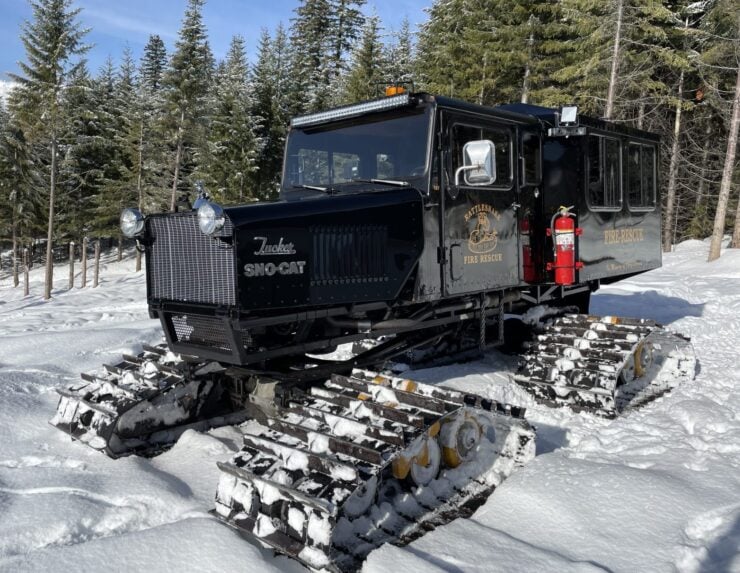

Tucker’s earliest prototypes used corkscrew-like augers and paddle wheels, but the breakthrough came when he developed a flexible tank-like track system mounted to independent pontoons – allowing each track to move freely over uneven terrain. That engineering decision became the foundation of the Tucker Sno-Cat – a machine designed to keep moving when every wheeled vehicle would be stopped dead.
The first production Sno-Cats rolled out just after World War II. Early models had steel pontoons wrapped with cleated steel tracks, later replaced with fiberglass housings to reduce weight – a crucial factor when traversing soft, deep snow. By the late 1940s, Tucker had refined the design into a four-track layout – two front and two rear – each mounted on its own oscillating arm.
This layout gave unmatched traction, flotation, and maneuverability in deep snow, where traditional dual-track designs tended to sink or slide. Steering was achieved by hydraulically pivoting the front and rear track sets in opposite directions, effectively bending the machine through turns rather than relying on skid-steer braking.
In 1955 Tucker’s design would become known to millions – several Sno-Cats were chosen for the Commonwealth Trans-Antarctic Expedition led by Sir Vivian Fuchs and Sir Edmund Hillary. Painted bright orange and equipped with Chrysler six-cylinder engines, the Tucker machines became the first vehicles to complete an overland crossing of Antarctica in 1958. The success of that expedition established Tucker as the gold standard for over-snow transportation – a reputation that endures to this day.
Through the 1960s and 1970s, Tucker expanded its model range to meet shifting industrial and recreational demand. Models like the 1000 and 2000 Series served power companies, ski resorts, research stations, and rescue units worldwide.
A smaller variant, the Tucker Model 222 “Sno-Kitten,” provided lighter-duty operation for survey and patrol work. Engines ranged from inline-sixes to Chrysler 318 V8s, paired with manual or automatic transmissions and two-speed transfer cases. The vehicles typically operated at low speeds – 10 to 20 mph, even 30 mph for some models – but could tow heavy loads or climb grades that would defeat a tracked bulldozer.
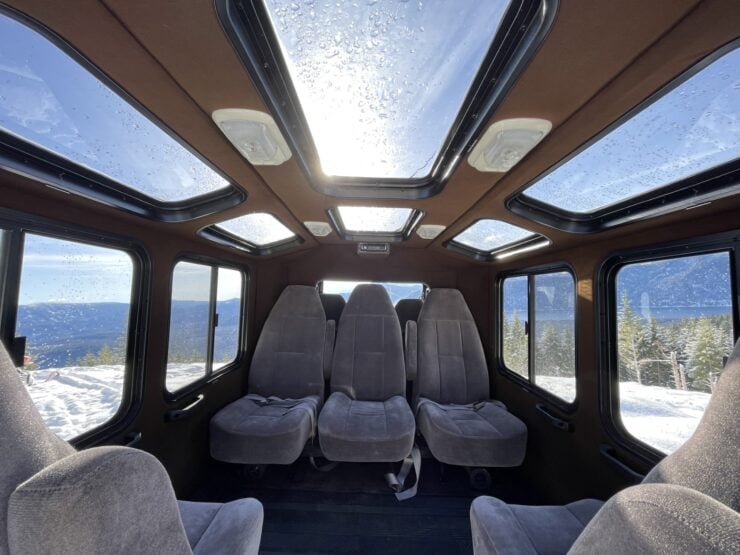

The engineering focus of all Tucker’s was always on simplicity and reliability – each track assembly was self-contained, driven by chains from a central differential and equipped with its own suspension. A single hydraulic disc brake on the transfer case handled stopping duties. Later models introduced Tucker’s “Terra Track” system, which replaced steel grousers with multiple rubber belts and aluminum shoes, improving ride quality, lowering weight, and reducing track wear on mixed terrain.
Cab designs also evolved from basic two-seat configurations to enclosed, heated passenger compartments with multiple rows of seating and vastly improved visibility.
By the 1980s, Tucker Sno-Cats were in use everywhere from Alaskan pipeline projects to Canadian logging operations. Ski areas adopted them as grooming machines, while emergency services used them for high-altitude rescues. NASA and the US military also fielded examples for Arctic testing and logistics. Despite steady modernization, the fundamental Tucker concept – independent four-track propulsion, low ground pressure, and mechanical simplicity – remained virtually unchanged.
Tucker Sno-Cat Corporation is still family-owned and operated from the same Medford, Oregon facility today. The lineup now includes models powered by Cummins diesels with enclosed cabs, advanced hydraulics, and updated electronics, but they retain the same engineering DNA that conquered Antarctica more than six decades ago.
The 1985 Tucker Sno-Cat Shown Here
This 1985 Tucker Sno-Cat shown in this article began life as a 1500 series snow vehicle before being extensively modified with a custom rear passenger cabin capable of seating five.
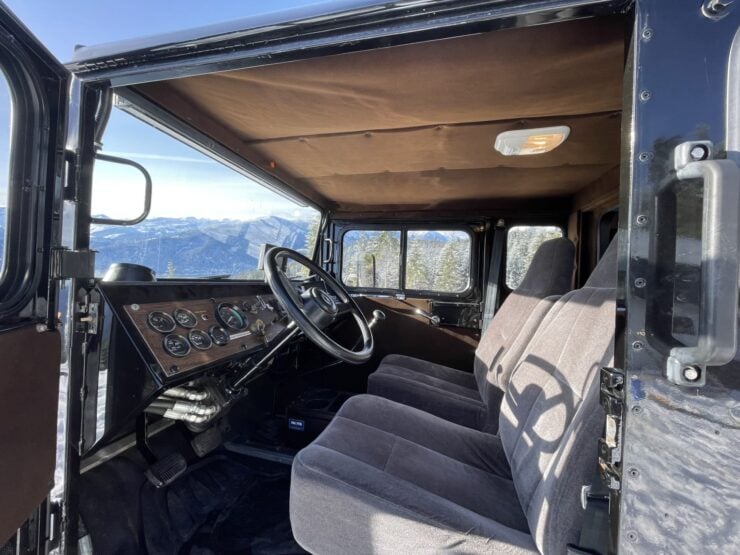

Originally finished in orange, it was later repainted black during a refurbishment performed between 2016 and 2021 while in service with a Colorado fire department. The restoration work included rebuilding the carburetor, driveshafts, and both differentials, as well as fitting a new exhaust system and replacing the water, fuel, and hydraulic pumps.
Power comes from a 318 cubic inch Chrysler V8 paired with a 4-speed manual transmission and a transfer case, driving four track assemblies via chain and sprocket. Each track has metal grousers, rubber belts, and independent wheel sets that provide the flotation and traction over snow that Tucker machines are known for.
A single hydraulic disc brake mounted to the transfer case handles stopping duties, while a hydraulic swingarm steering system allows the vehicle to pivot on snow or ice – an arrangement that’s been part of Tucker’s mechanical DNA since the 1950s.
Inside, the forward cabin has gray cloth bucket seats, brown cloth trim, and woodgrain accents across the dash. Modern updates include a navigation system, a back-up camera, and Pioneer stereo, with 12-volt outlets and cupholders integrated into an aftermarket center console.
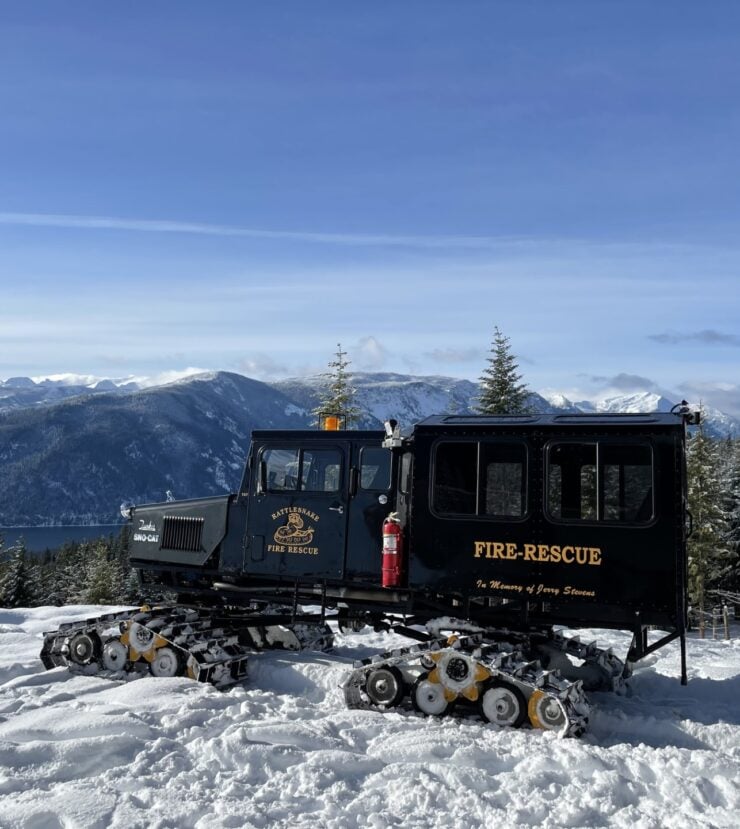

The instrument panel houses a 6,000 rpm tachometer and analog gauges for fuel, oil, voltage, and temperature, the latter of which was replaced in 2017. The rear passenger cabin, accessible through a single rear door, was custom built to accommodate five additional occupants with individual cloth bucket seats, lap belts, and panoramic windows.
It’s now being offered for sale out of Snohomish, Washington on Bring a Trailer with service records and a bill of sale. If you’d like to read more or place a bid you can visit the listing here.
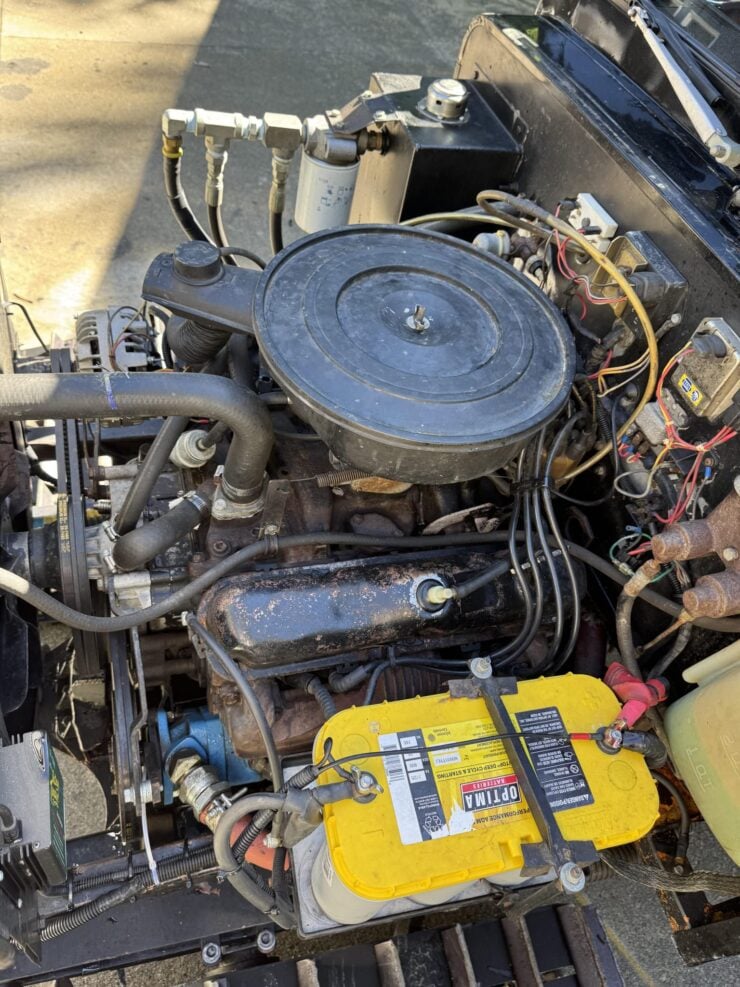
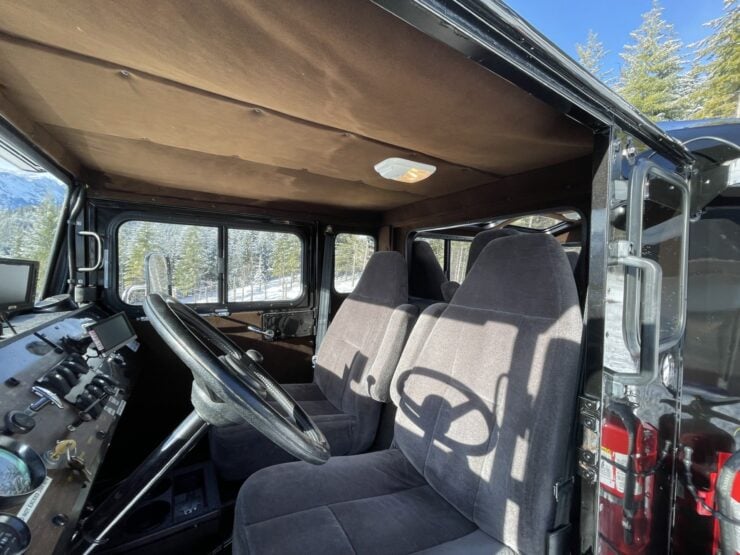
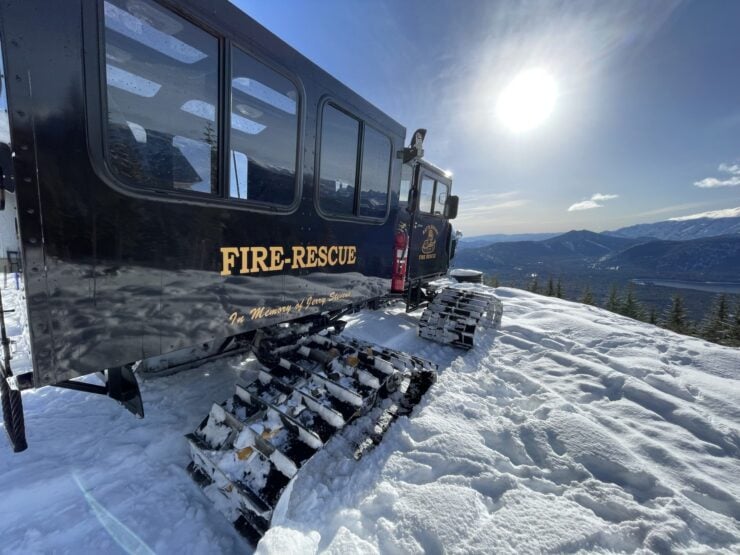
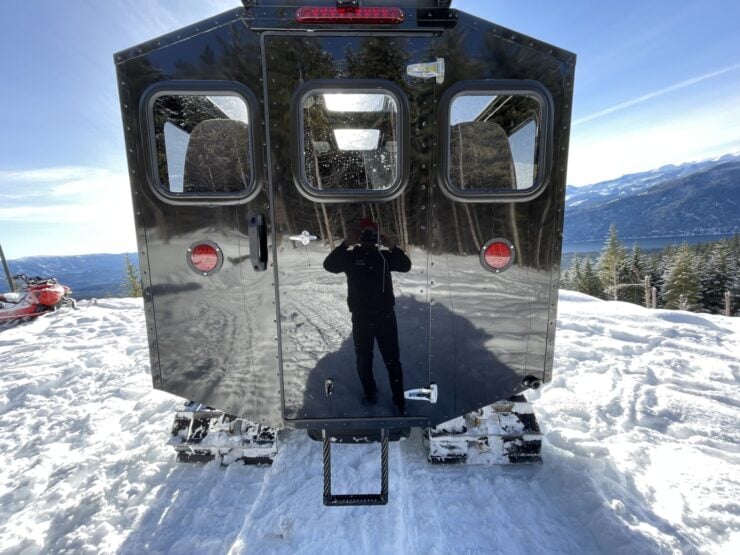
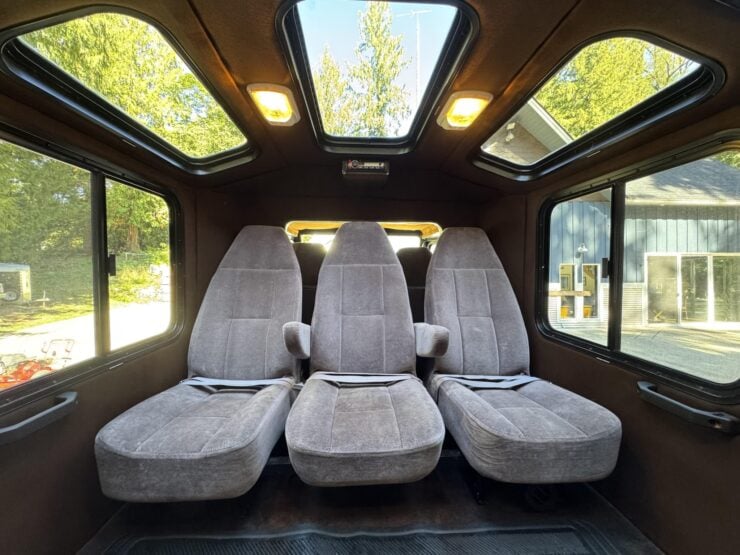
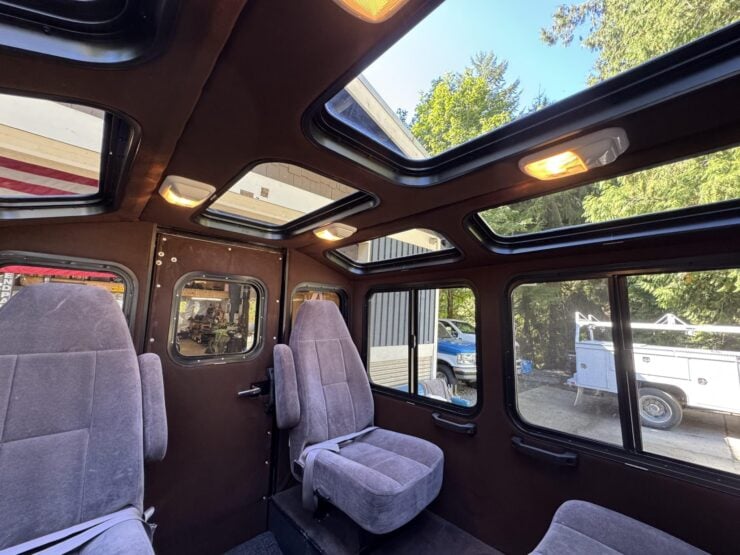
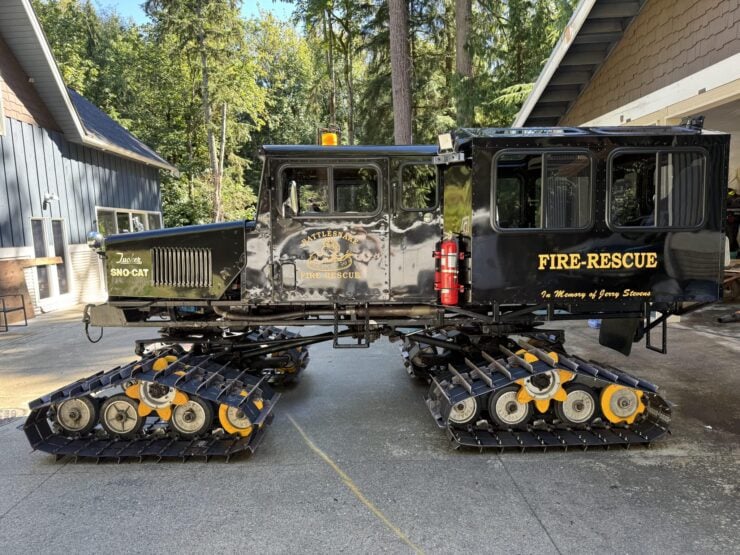
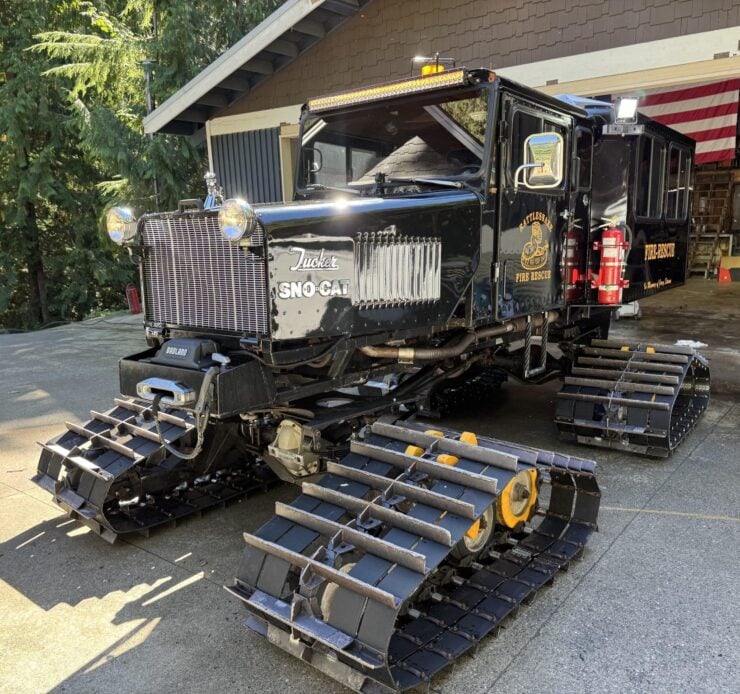
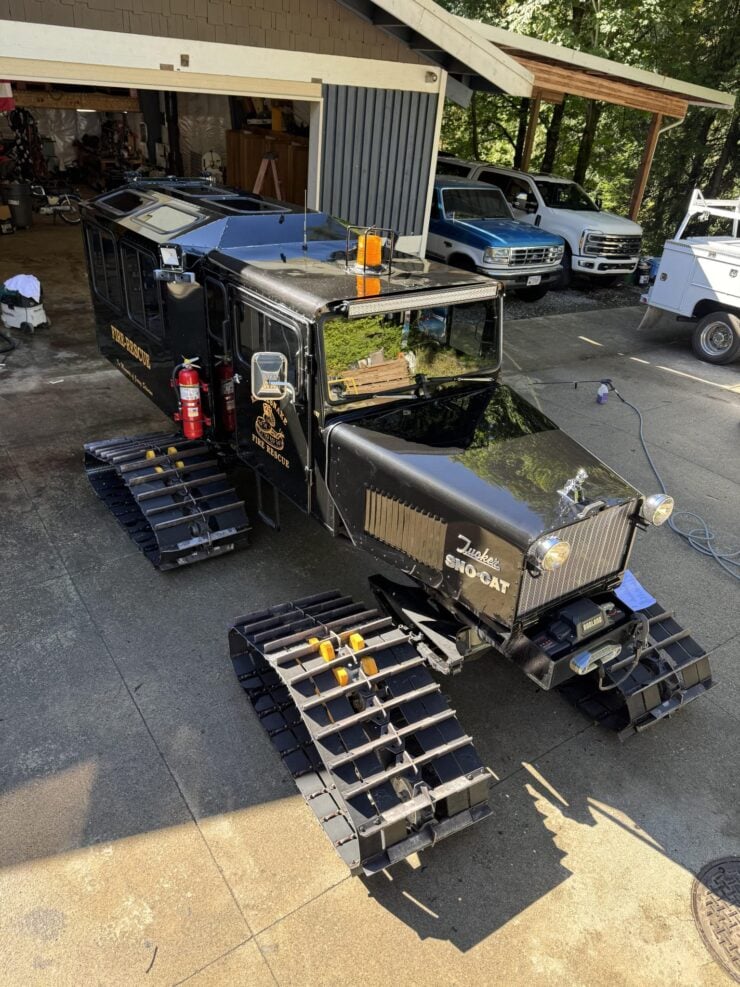
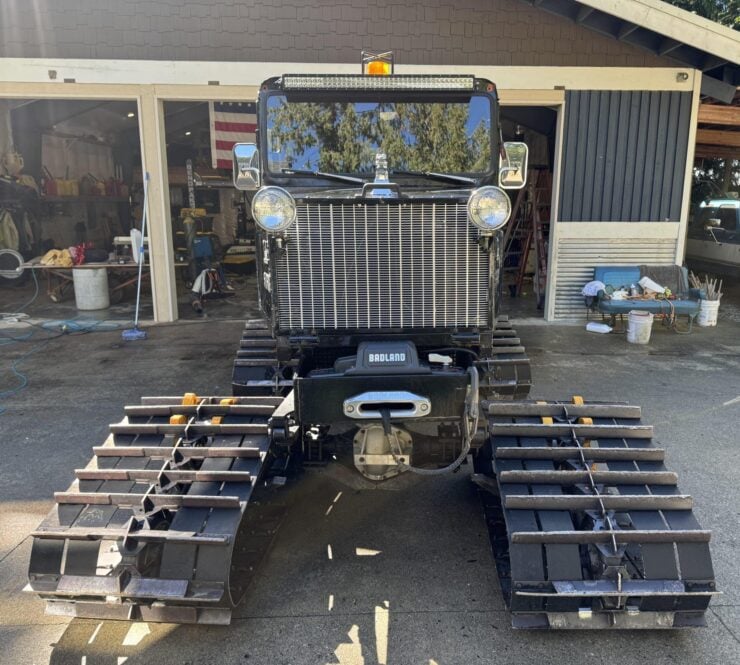
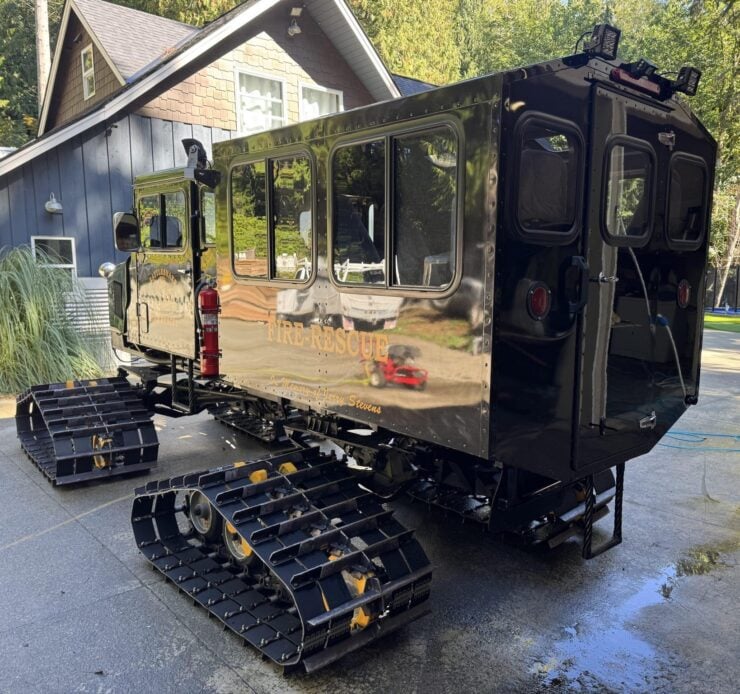
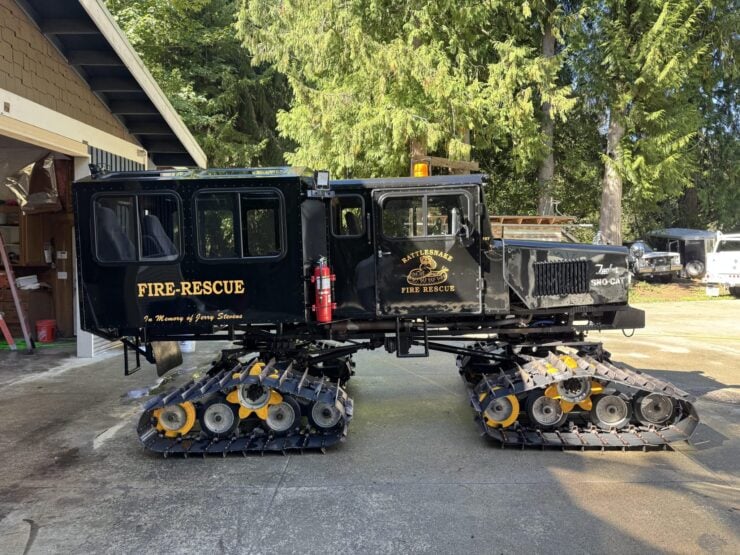
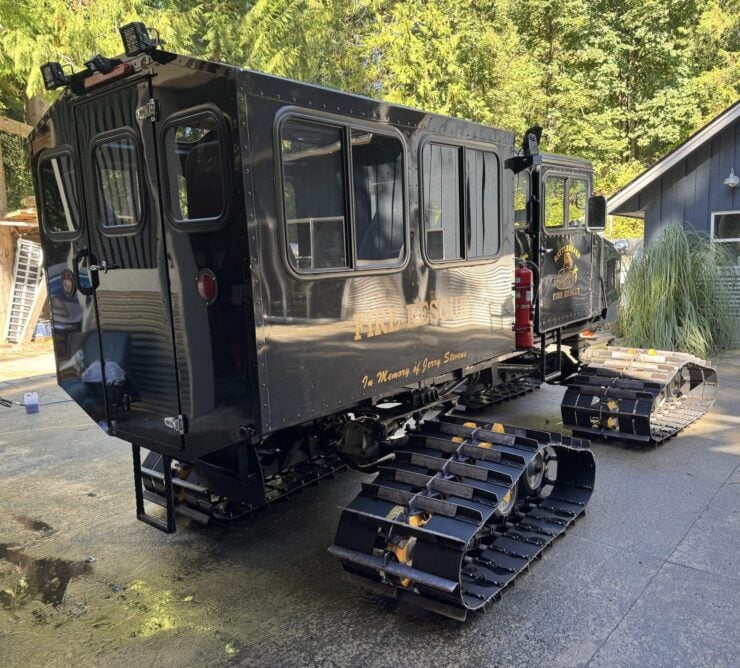
Images courtesy of Bring a Trailer

